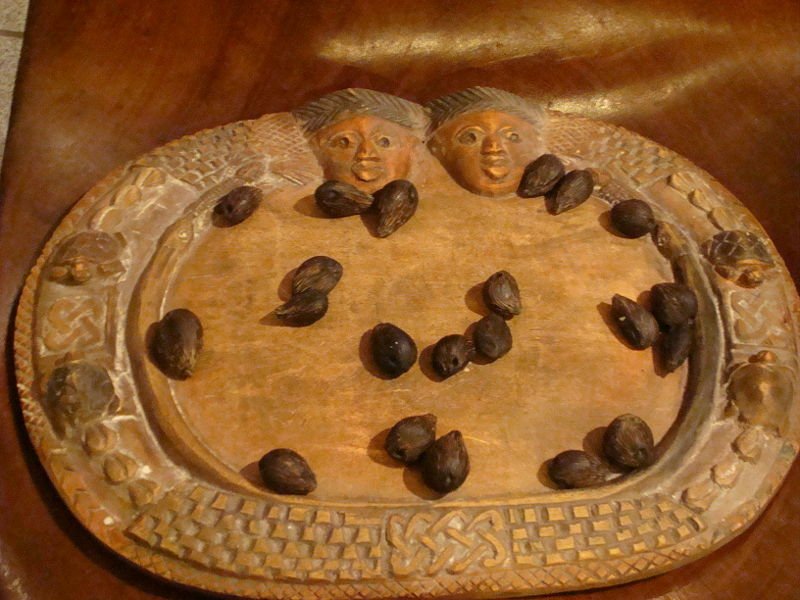These types of plants were enumerated by Matua A Taana,
the 9th ariki motongi - who presumably was personifying Canopus:
|
ko oto uta |
ariki motongi |
1 |
Hamal (*30) |
|
ko tangaroa.a oto uta |
ariki motongi |
2 |
(*57) |
|
ko tiki hati.a tangaroa |
ariki motongi |
3 |
(*84) |
|
ko roroi.a tiki hati |
ariki motongi |
4 |
(*111) |
|
ko tuu kumā.a roroi |
ariki motongi |
5 |
(*138) |
|
ko ataranga.a tuu kumā |
ariki motongi |
6 |
Alkes (*165 =
348 - 183) |
|
ko harai.a
ataranga |
ariki motongi |
7 |
Bharani
(*41) |
|
ko taana.a harai |
ariki motongi |
8 |
Aldebaran (*68) |
|
ko matua.a taana |
ariki motongi |
9 |
Canopus (*95) |
|
ko hotu.a matua |
ariki motongi |
10 |
Antares (*249) |
.jpg)
|
1 |
Banana
shoots |
te huri maika |
|
2 |
Taro
seedlings |
te uru taro |
|
3 |
Sections of
Sugarcane |
tepupura toa |
|
4 |
Yam roots |
te uhi |
|
5 |
Sweet
potatoes |
te rau kumara |
|
6 |
Hauhau
trees |
te hauhau |
|
7 |
Paper
Mulberry trees |
te mahute |
|
8 |
Sandalwood
trees |
te naunau |
|
9 |
Toromiro
trees |
te toromiro |
|
10 |
Ferns |
te riku |
|
11 |
Rushes |
te ngaatu |
|
12 |
Yellow
roots |
te pua |
|
13 |
Tavari
plants |
te tavari |
|
14 |
Moss |
te para |
|
15 |
Nga Oho
plants |
te ngaoho |
|
16 |
Grass |
te mauku tokoa |
It is essential to count.
|
manu pao i te hau tea - kua tu |
manu rere ki te hau tea - kua tu |
manu rere ki te hau tea |
kiore - henua |
|
Pao.
To cut off, to throw a
lance. Churchill.
Paopao,
spade, shovel, rubbish, to lacerate,
to have a quarrel with. Churchill.
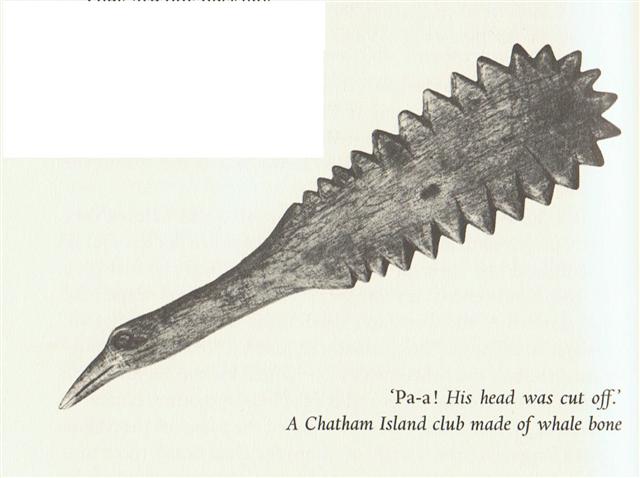
There are 27 teeth
around the tail of the bird above. |
 |
 |
 |
 |
|
Cb4-13 → 14 * 29½ |
Cb4-14 (477 = 392 + 85) |
Cb4-15 |
Cb4-16 (87 = 3 * 29) |
|
CLOSE TO THE FULL MOON: |
| no
star listed (110) |
ALUDRA (Virgin) = η Canis Majoris
(111.1),
PROPUS = ι Gemini (111.4),
GOMEISA (Water-eyed) = β Canis
Minoris
(111.6)
*70.0 = *111.4 - *41.4 |
ρ Gemini (?) (112.1),
Eskimo Nebula = NGC2392 Gemini
(112.2)
ANTARES
(α Scorpii)
|
Al Dhirā'-5 (Forearm) /
Punarvasu-7 (The Two Restorers of
Goods) /
Mash-mashu-Mahrū-10 (Western One of
the Twins)
CASTOR
= α Gemini
*113.4 = *41.4 + *72.0 |
|
July 9 (10 * 19) |
10 |
11 |
12 (193 = 152 + 41) |
|
'June 12 (190 - 27) |
13 (164) |
14 |
15 |
|
"May 29 (190 - 41) |
30 (150) |
31 |
Te Maro 1 (8 * 19) |
|
... On the twenty-fifth day of the
first month (Vaitu Nui),
Ira and Makoi set sail;
on the first day of June ('Maro'),
the bow of Ira's canoe
appeared on the distant horizon,
came closer and closer on its
course, and sailed along, and
finally (one) could see the (new
home) land ... (E:17) |
|
... The jaguar
learned from the grasshopper that
the toad and the rabbit had stolen
its fire while it was out hunting,
and that they had taken it across
the river. While the jaguar was
weeping at this, an anteater came
along, and the jaguar suggested that
they should have an excretory
competition. The anteater, however,
appropriated the excrement
containing raw meat and made the
jaguar believe that its own
excretions consisted entirely of
ants. In order to even things out,
the jaguar invited the anteater to a
juggling contest, using their eyes
removed from the sockets: the
anteater's eyes fell back into
place, but the jaguar's remained
hanging at the top of a tree, and so
it became blind. At the request of
the anteater, the macuco bird made
the jaguar new eyes out of water,
and these allowed it to see in the
dark. Since that time the jaguar
only goes out at night. Having lost
fire, it eats meat raw. It never
attacks the macuco ...'
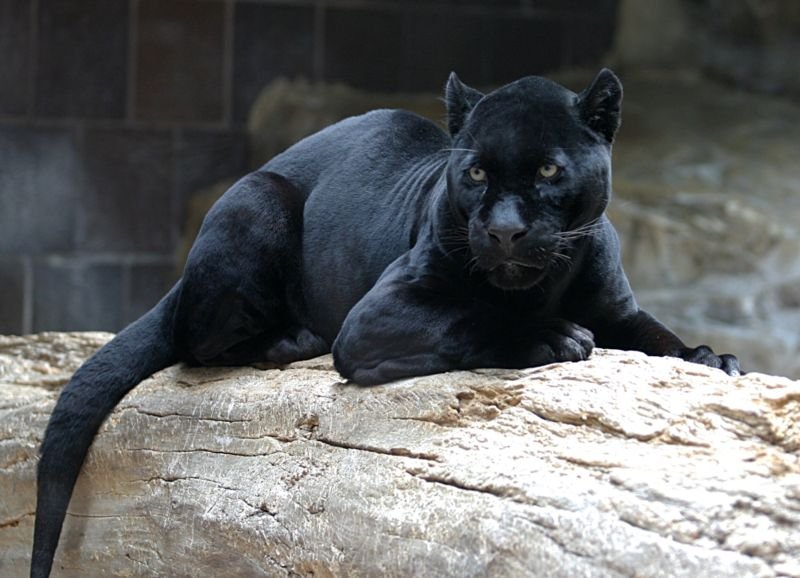 |
Grass seems to have symbolized
(characterized) the beginning
of a new (virgin) land.
... What happens after (or happened, or will
happen sometime, for this myth is written in the future tense),
is told in the Völuspa, but it is also amplified in Snorri's
Gylfaginning (53), a tale of a strange encounter of King
Gylfi with the Aesir themselves, disguised
as men, who do not reveal their identity but
are willing to answer questions: 'What
happens when the whole world has burned up,
the gods are dead, and all of mankind is
gone? You have said earlier, that each human
being would go on living in this or that
world.' So it is, goes the answer, there are
several worlds for the good and the bad.
Then Gylfi asks: 'Shall any gods be alive,
and shall there be something of earth and
heaven?' And the answer is: 'The earth rises
up from the sea again, and is green and
beautiful and things grow without sowing.
Vidar and Vali are alive, for neither the
sea nor the flames of Surt have hurt them
and they dwell on the Eddyfield, where once
stood Asgard. There come also the sons of
Thor, Modi and Magni, and bring along his
hammer. There come also Balder and Hoder
from the other world. All sit down and
converse together. They rehearse their runes
and talk of events of old days. Then they
find in the grass the golden tablets that
the Aesir once played with ...

13 * 13 - 4 = 165. And
165 - 13 (the white pieces above) = 152 (= 8
* 19) - as in Te Maro 1 when the Sun
reached Castor and the Explorers reached the
new land.
Sa.: malae, the town green. Nukuoro:
malae, a cleared space, an open
place, a plantation. To.: malae, a
gree, a grass plot ... Ha.: malae,
smooth (as a plain) ... Ma.: marae,
an inclosed place in front of a house. Ta.:
marae, the sacred place of worship
... Vi.: mara, a burying place ... In
note 261 I have advanced the opinion that
malae is in form a conditional
derivative of lae. This holds of the
signification found in Nuclear Polynesia.
The secondary sense which the Tongafiti
carried to eastern Polynesia has obscured
the lae element; but the sacrosanct
content of the marae in the
four-godded theology of eastern Polynesia is
after all but a logical outgrowth of the
Nuclear Polynesian malae as the civic
center of social life where god is sole,
surpreme - and Lucretian ... Churchill 2.
From there (Te
Maro 1) to the arrival
of Hotu A Matua (at the time of
Bharani) there were 288 - 152 = 136 right
ascension days - as in the day number for
Alcyone in the Pleiades (at the opposite
side of the year at the time of rongorongo).
136 + *41 = 177 = 354 / 2.

|
Bharani
(*41) |
26 |
Aldebaran (*68) |
26 |
Canopus (*95) |
|
Antares
(*249) |
|
0 |
27 |
2 * 27 |
*208 - 181 = *27 |
*249 - *27 = *222:
|
te maitaki |
kua hua te kahi |
te ahine poo puo |
ki
te huaga |
ki
te huaga |
te kahi |
|
Hua.
1. Testicle. 2.
Figuratively: son, hua
tahi, only son; fruits
of the earth; to grow well
(of fruits). 3. To cause a
fight, a quarrel. Hua-ai,
generation, as
lineage of direct
descendents;
contemporaries. Huahua,
coccyx of bird,
'parson's nose': huahua
moa, huahua uha.
Huataru, a
creeper (Chenopodium
ambiguum). Vanaga. 1.
The same; ki hua,
again, to continue, to
strain, to struggle, to
move, to repeat, over and
above. Mq.: hua, the
same, to return, to
recommence. 2. To bloom, to
sprout; flower, fruit (huaa);
huaa tae oko, huaa
vahio, young fruit;
hua atahi, only son;
huahaga, fruit; mei
te huahaga o tokoe kopu,
the fruit of thy body;
tikea huahaga, deceptive
appearance. P Pau.: ua,
to be born; huahaga,
lineage. Mgv.: hua,
to produce (said of trees,
grain, etc.), blooming time
of flowers, abundance of
fruit. Mq.: hua, to
produce, to bear fruit. Ta.:
ua, to sprout.
Huahua. 1. Tailless
fowl. 2. Vein, tendon, line.
3. Mgv.: huahua,
pimples covering the face.
Ta.: huahua, id. Mq.:
hua, tubercules. Sa.:
fuafua, abscess on
hand or feet. Ma.: huahua,
small pimples. Pau.:
Hua-gakau, rupture. Ta.:
áau, entrails. Sa.:
ga'au, id. Ma.:
ngakau, id. Churchill.
1. Fruit. 2. Egg. 3. Tā
hua = 'genealogical
writing' or 'same writing'.
Fischer.
Kahi.
Tuna; two sorts: kahi
aveave, kahi matamata.
Vanaga. Mgv.: kahi,
to run, to flow. Mq.:
kahi, id. Churchill.
Rangitokona, prop up the
heaven! // Rangitokona,
prop up the morning! // The
pillar stands in the empty
space. The thought [memea]
stands in the earth-world -
// Thought stands also in
the sky. The kahi
stands in the earth-world -
// Kahi stands also
in the sky. The pillar
stands, the pillar - // It
ever stands, the pillar of
the sky. (Morriori creation
myth according to Legends of
the South Seas.) |
 |
 |
 |
 |
 |
 |
|
Cb8-24 |
Cb8-25 |
Cb8-26 |
Cb8-27 |
Cb8-28 (199) |
Cb8-29 (584 + 8) |
|
CLOSE TO THE FULL MOON: |
|
Oct 28 → Cb8-28 |
29 |
30 |
31 |
Nov 1 (305) |
2 |
|
ρ
Lupi (221.0),
TOLIMAN
(Shoot of the Grapevine) =
α
Centauri
(221.2),
π
Bootis (221.8),
ζ
Bootis (221.9) |
31 Bootis (222.0),
YANG MUN (South Gate) =
α
Lupi
(222.1),
RIJL AL AWWA
(Foot of the Barker) =
μ
Virginis
(222.5),
ο
Bootis (222.9) |
IZAR
(Girdle) =
ε
Bootis
(223.0),
109 Virginis,
α
Apodis (No Feet)
(223.3),
μ
Librae (223.8) |
Al Zubānā-14a
(Claws) /
Visakha-16 (Forked) /
Root-3 (Badger)
ZUBEN ELGENUBI
(Southern Claw)
=
α
Librae
(224.2),
ξ
Bootis,
ο
Lupi (224.5) |
KOCHAB
(Kakkab,
the Star) = β Ursae Min.
(225.0), ξ Librae (225.7) |
KE KWAN (Cavalry Officer) =
β
Lupi
(226.3),
KE KWAN =
κ
Centauri (226.4),
ZUBEN ELAKRIBI
(Claw of the Scorpion) =
δ
Librae
(226.8),
π¹
Oct.
(226.9)
*185.0 = *226.4 - 41.4 |
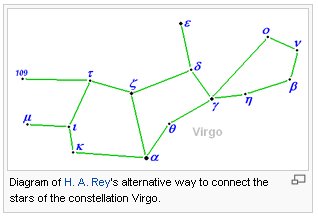 |
|
'Oct 1 |
2 |
3 |
4 (277) |
5 |
6 |
|
"Sept 17 (364 - 104) |
18 (9 * 29 = 261) |
19 |
20 |
21 (364 - 100) |
Equinox |
 |
|
CLOSE TO THE
SUN: |
|
ν Arietis (38.5), δ, ε Ceti
(38.8) |
μ
Arietis (39.4),
HEAD OF THE FLY = 35 Arietis
(39.6),
KAFFALJIDHMA (Part of a
Hand) = γ Ceti,
θ
Persei (39.8) |
π
Ceti,
ο
Arietis (40.0),
ANGETENAR (Bend in the
River) = τ¹ Eridani,
μ
Ceti (40.2),
RIGHT WING = 39 Arietis
(40.9) |
Bharani-2 (Yoni) /
Stomach-17 (Pheasant)
π
Arietis (41.2),
MIRAM (Next to the Pleiades)
= η Persei
(41.3),
BHARANI
= 41 Arietis (41.4),
τ²
Eridani,
σ
Arietis (41.7) |
TA LING (Great Mound) = τ
Persei
(42.4)
*1.0 = *42.4 - *41.4 |
ρ
Arietis (43.0),
GORGONEA SECUNDA = π Persei
(43.5),
ACAMAR
(End of the River) =
θ
Eridani
(43.6),
ε
Arietis (43.7),
λ
Ceti (43.9)
DENEBOLA (β Leonis) |
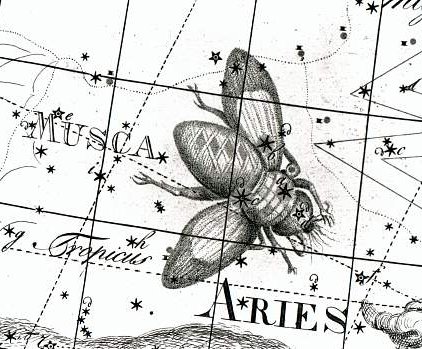 
... Before writing was invented
everything had to be commited to
memory. Strings of words are more
easy to remember than isolated ones.
Therefore, I think, the Polynesians
were fond of
lists. Lists of e.g. birds
could be used to memorize other
things, such as the order and events
connected with the different months.
We should not underestimate the
potentiality of such a method:
... The ollave in
ancient Ireland had to be master of
one hundred and fifty Oghams, or
verbal ciphers, which allowed him to
converse with his fellow-poets over
the heads of unlearned bystanders;
to be able to repeat at a moment's
notice any one of three hundred and
fifty long traditional histories and
romances, together with the
incidental poems they contained,
with appropriate harp accompaniment;
to have memorized an immense number
of other poems of different sorts;
to be learned in philosophy; to be a
doctor of civil law; to understand
the history of modern, middle and
ancient Irish with the derivations
and changes of meaning of every
word; to be skilled in music,
augury, divination, medicine,
mathematics, geography, universal
history, astronomy, rhetoric and
foreign languages; and to be able to
extemporize poetry in fifty or more
complicated metres.
That anyone at
all should have been able to qualify
as an ollave is surprising; yet
families of ollaves tended to
intermarry; and among the Maoris of
New Zealand where a curiously
similar system prevailed, the
capacity of the ollave to memorize,
comprehend, elucidate and
extemporate staggered Governer Grey
and other early British observers.
(The White Goddess)
Manuscript E
ought to reflect some of the ollave
'cosmos'. Even more so should the
rongorongo texts be of this
nature, a great web of
interconnected names and ideas. My
glyph dictionary is meant to be of
help in reading the rongorongo
texts, and I therefore must try to
include everything which possibly
could be of use for interpreting the
signs on the tablets ...
|
Based on a study of the
kea glyphs in A
and G an intuitive
approach lead to a few
conclusions. Kea
in Ab8-84, the last
glyph on side b, seems
to illustrate how the
'egg' in Ab8-80 (where 8
* 8 = 64 apparently is a
number sign for maximum)
is evolving into 2
'persons':
 |
3 |
 |
| Ab8-80 |
Ab8-84 |
 |
 |
| Gb7-31 |
Gb8-3 |
The
imagery
is
different
in G,
where
instead
a thumb
evolves
into a
hanging
fruit (hua).
In
midwinter
Sun will
turn
around
(cfr
Gb8-3)
and
daylight
(ao)
will
once
again
'stand
up' (tu).
The bird
list in
Manuscript
E has a
triplet
of birds
(tuvi,
tuao,
tavi)
located
immediately
before
the
arrival
of the
spring
bird
manu
tara
and this
triplet
of birds
could
refer to
the same
events
as those
described
in Gb8-4
(cfr 84
in
Ab8-84),
Gb8-5,
and
Gb8-6:
 |
 |
 |
|
Gb8-1 |
Gb8-2 |
Gb8-3 |
|
Mercury |
Jupiter |
Venus |
 |
 |
 |
|
Gb8-4 |
Gb8-5
|
Gb8-6
(448) |
|
Saturn
('tu-vi') |
Sun
('tu-ao') |
Moon
('ta-vi') |
The new
beginning is
close to the
old end, and
it is
difficult to
discern the
one from the
other. While
Tahua
has kea
as the
last glyph
on the back
side of the
tablet the
creator of G
has instead
put a kea
as the first
glyph in the
last line of
the back
side.
The double
heads of
these two
kea
glyphs
presumably
represent
the front
and back
sides of the
year, and we
should
remember the
Yoruba board
for the
divination
game Ifá
(cfr at
niu):
Already
the
ancient
Babylonians
associated
winter
solstice,
and also
summer
solstice,
with
uncertainty
('the
chamber
of
hazard'
months,
Ubšugina
respectively
Duazaga),
and the
hard to
see
planets
Saturn
and
Mercury
are
possible
to use
in order
to
illustrate
how
difficult
it is to
perceive
the
future -
the
future
in
uncertain.
|
|
.jpg)
















